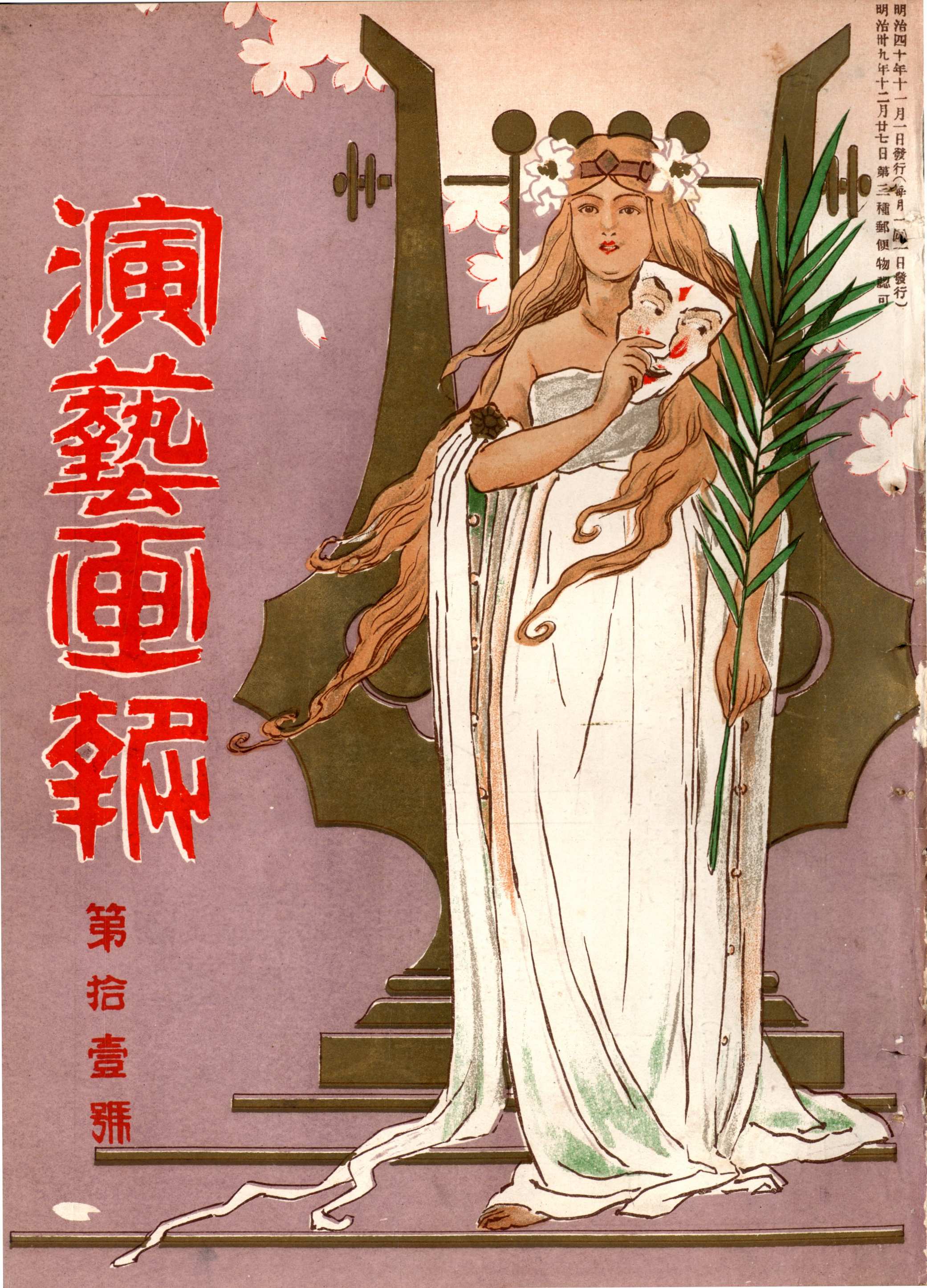G07 Sumptuous Gravure Magazine
-
"Engeigaho" vol.1(10,11)
Published: October 1907(Meiji 40), Engeigaho pub.
Ritsumeikan Art Research Center
Since a leading Kabuki magazine "Kabuki shinpo" ended publication in 1897 (Meiji 30), its following "Kabuki" was started magazine in the same year and lasted until 1915 (Taisho 4). The magazine provided here is "Engeigaho" established in January 1907 (Meiji 40). While "Kabuki" was more like an academic journal, "Engeigaho" featured gravure pictures with an emphasis on entertainment and popularity. In Taisho era, such kind of gravure magazines had become the trend also in other field. At that time, magazines were regarded as advertisement media rather than book, so lots of advertisement for theatre lovers occupied a certain degree of the magazines. "Engeigaho" lasted until October 1943 (Showa 18), the last number was vol.439. The reason why it was discontinued was the order stated by government during World War II to unify theatrical magazine.
The genres which the magazine was dealing with covered various subjects, such as theatre critiques, scripts, historical investigation, actors' talk, updates about theatrical arts. Among them, a series of "Shibai mitamama" (performance as we look) was one of the characteristics of this magazine with its unique style. It reported the contents of the performance, but the style was quite different from either scripts or novels, it was more like journalistic.
The company announcement on vol.1(12) (published in December 1907) tells us the direction this magazine intended, says,
"We describe the performance as we saw and show it to the people was not there. We make effort to entertain the people who read it. And the readers accept it as enjoyable.
Someone who can afford to share your joy at the theatres and no longer want to enjoy watching the performance only by themselves, please sent your report to our company."
Here, we can see that the magazine was intended to compose not an academic report for specialists, but a entertainment contents for average Kabuki fans, and to allow them to join to make pages of the magazine. (,) -

- 投稿日:
- by 8P
- カテゴリ: G Amusement for Audiences
- [編集]